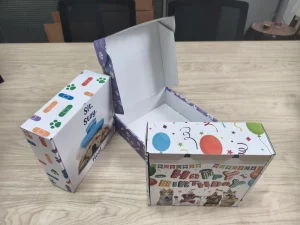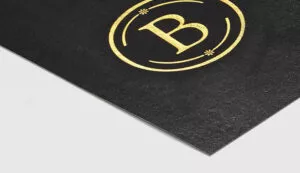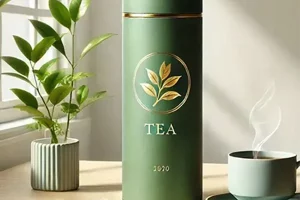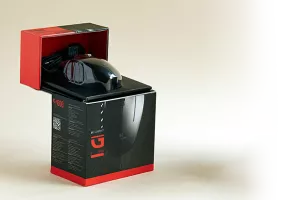Are you ever confused about the difference between paper boxes and cardboard boxes? Let’s break it down so you can finally understand!
A paper box and a cardboard box might seem similar, but they are made from different materials. Paper boxes are lighter, while cardboard boxes are sturdier and designed for more heavy-duty use.

Now that we know the basics, let’s dive into the specifics and clear up all your doubts about paper and cardboard boxes.
What is a chipboard box?
Chipboard boxes are often used for packaging, but are they the same as paper or cardboard boxes? Let’s find out.
Chipboard boxes are a type of paperboard made from recycled paper, often used for retail packaging. While they resemble cardboard boxes, they are thinner and less durable.

Chipboard is made by compressing layers of recycled paper fibers, which makes it a lightweight option for packaging. It’s commonly used for things like cereal boxes or shoe boxes. However, chipboard is not as thick or strong as regular cardboard, making it unsuitable for heavier or more fragile items. It’s more affordable and eco-friendly due to its use of recycled materials, but it doesn’t offer the same protection as corrugated cardboard. Chipboard boxes, while still durable, are more appropriate for low-weight items, as they lack the extra strength that comes with cardboard’s double-layer structure.
Comparing Chipboard and Cardboard
| Característica | Chipboard | Cartón |
|---|---|---|
| Material | Recycled paper fibers | Wood pulp or recycled fibers |
| Thickness | Thin | Thick and strong |
| Durabilidad | Less durable | Highly durable, withstands pressure |
| Uses | Retail packaging, lightweight items | Heavy-duty packaging, electronics, and shipping |
| Coste | Inexpensive | More expensive due to strength |
In conclusion, chipboard and cardboard have their specific uses, but chipboard is not a suitable substitute for heavier-duty cardboard boxes.
What is the difference between paper and cardboard?
Many people assume paper and cardboard are the same thing, but there’s a key difference between them.
While paper is thin and flexible, cardboard is much thicker and stronger. Cardboard is made by layering sheets of paper together, providing more strength.

Paper is a versatile material that can be used for writing, printing, or packaging. It’s often thin, flexible, and easily torn. Cardboard, on the other hand, is much thicker and more rigid, made by layering several sheets of paper and gluing them together. This structure gives it added strength and durability, making it ideal for packaging and shipping. The key difference lies in the thickness and rigidity of the materials. While paper can be used for lightweight applications like writing or wrapping, cardboard is used when more durability is required—think boxes, shipping containers, and other heavy-duty uses.
Paper vs. Cardboard: Key Differences
| Característica | Paper | Cartón |
|---|---|---|
| Thickness | Thin, flexible | Thick, rigid |
| Strength | Bajo | Alta |
| Uses | Printing, wrapping, crafting | Packaging, shipping, heavy-duty use |
| Durabilidad | Easily torn, less durable | Strong, can support weight |
In short, while both are made from similar raw materials, cardboard is the stronger and more durable option due to its thicker construction.
What is another name for a cardboard box?
Did you know cardboard boxes have a few other names depending on their use? Let’s explore some alternatives.
Cardboard boxes are often referred to as cartons or corrugated boxes. These names reflect the structure and material used in their creation.

The term "carton" is often used interchangeably with "caja de cartón," but there’s a subtle difference. Cartons typically refer to boxes made from a single layer of cardboard. However, the term "cardboard box" can also refer to more complex boxes made from multiple layers, including those with a corrugated inner layer for extra strength. "Corrugated boxes" refer to boxes made with this layered structure, which makes them ideal for shipping and transporting items safely. Corrugated cardboard is usually used for more heavy-duty purposes, while "carton" tends to refer to lighter, smaller boxes used for retail packaging.
Different Terms for Cardboard Boxes
| Term | Description |
|---|---|
| Cardboard Box | General term for boxes made of cardboard |
| Carton | Usually refers to lighter, single-layer boxes |
| Caja de cartón corrugado | Multi-layer boxes with an inner corrugated layer for strength |
So, the name may change, but all of these terms ultimately refer to boxes that are used for packaging, shipping, and storage.
Is cardboard just thick paper?
Is it as simple as paper, just thicker? Let’s take a closer look at this misconception.
Cardboard isn’t just thick paper. It’s a specific material made by layering paper and other materials to create a durable, rigid structure.

Cardboard might look like thick paper at first glance, but it’s more than that. Cardboard is made by layering multiple sheets of paper together, often with additional materials to provide extra strength. The process of creating cardboard involves gluing together layers of paper in a way that increases its durability. While paper is generally thin, flexible, and soft, cardboard has a rigid structure that is designed to protect contents and withstand weight. So, while cardboard and paper share similar raw materials, their construction is different, making cardboard more suitable for packaging and shipping.
Paper vs. Cardboard Composition
| Material | Paper | Cartón |
|---|---|---|
| Structure | Single layer of paper | Multiple layers of paper, sometimes with added materials |
| Strength | Flexible, weak | Strong, rigid |
| Use | Printing, wrapping | Packaging, shipping |
In conclusion, cardboard is more than just thick paper. It’s a carefully engineered material designed for strength and durability.
What is the difference between a carton box and a cardboard box?
Are you wondering if there’s a difference between a carton box and a cardboard box? Let’s clear this up.
Carton boxes are generally made from a single layer of cardboard, while cardboard boxes can be made from multiple layers for added strength. The terms are often used interchangeably.

A carton box is typically made from a single layer of cardboard, making it lighter and more suitable for storing or shipping lighter items. Cardboard boxes, on the other hand, can be constructed from multiple layers, including a corrugated inner layer for extra protection. This makes cardboard boxes stronger and better suited for shipping heavy or fragile items. While both terms are often used interchangeably, understanding the difference can help you choose the right type of packaging for your needs. Cartons are usually used in retail, while cardboard boxes are preferred for heavy-duty packaging and shipping.
Carton vs. Cardboard: Key Differences
| Característica | Carton Box | Cardboard Box |
|---|---|---|
| Material | Single layer of cardboard | Multiple layers, often with corrugation |
| Strength | Lighter, less durable | Stronger, more durable |
| Uses | Retail packaging, lightweight items | Heavy-duty shipping, protection for fragile items |
Cartons are a lighter and simpler version of cajas de cartón1, while cardboard boxes are stronger and designed for tougher tasks.
Conclusión
To sum it up, paper boxes and cardboard boxes serve different functions. Understanding their differences can help you choose the best packaging solution for your needs.
-
Discover the advantages of cardboard boxes, including their strength and versatility for shipping and storage needs. ↩








